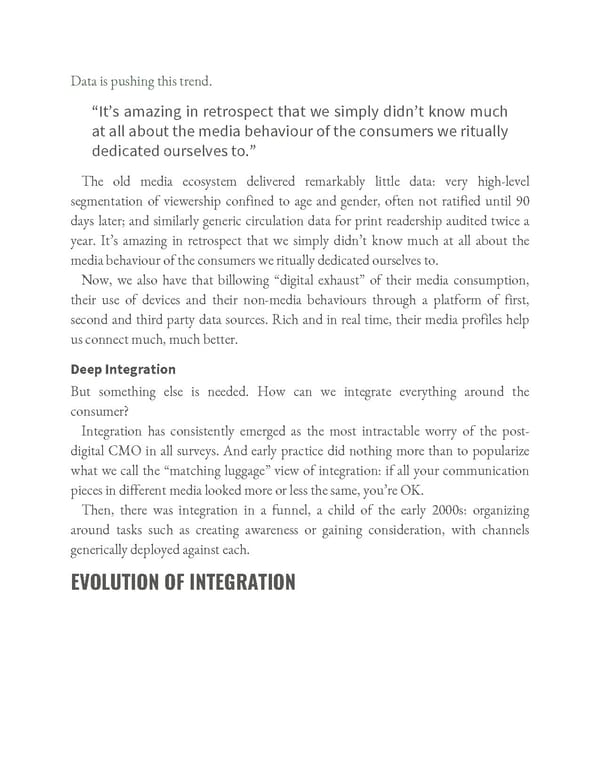Data is pushing this trend. “It’s amazing in retrospect that we simply didn’t know much at all about the media behaviour of the consumers we ritually dedicated ourselves to.” The old media ecosystem delivered remarkably little data: very high-level segmentation of viewership confined to age and gender, often not ratified until 90 days later; and similarly generic circulation data for print readership audited twice a year. It’s amazing in retrospect that we simply didn’t know much at all about the media behaviour of the consumers we ritually dedicated ourselves to. Now, we also have that billowing “digital exhaust” of their media consumption, their use of devices and their non-media behaviours through a platform of first, second and third party data sources. Rich and in real time, their media profiles help us connect much, much better. Deep Integration But something else is needed. How can we integrate everything around the consumer? Integration has consistently emerged as the most intractable worry of the post- digital CMO in all surveys. And early practice did nothing more than to popularize what we call the “matching luggage” view of integration: if all your communication pieces in different media looked more or less the same, you’re OK. Then, there was integration in a funnel, a child of the early 2000s: organizing around tasks such as creating awareness or gaining consideration, with channels generically deployed against each. EVOLUTION OF INTEGRATION
 Ogilvy on Advertising in the Digital Age Page 235 Page 237
Ogilvy on Advertising in the Digital Age Page 235 Page 237